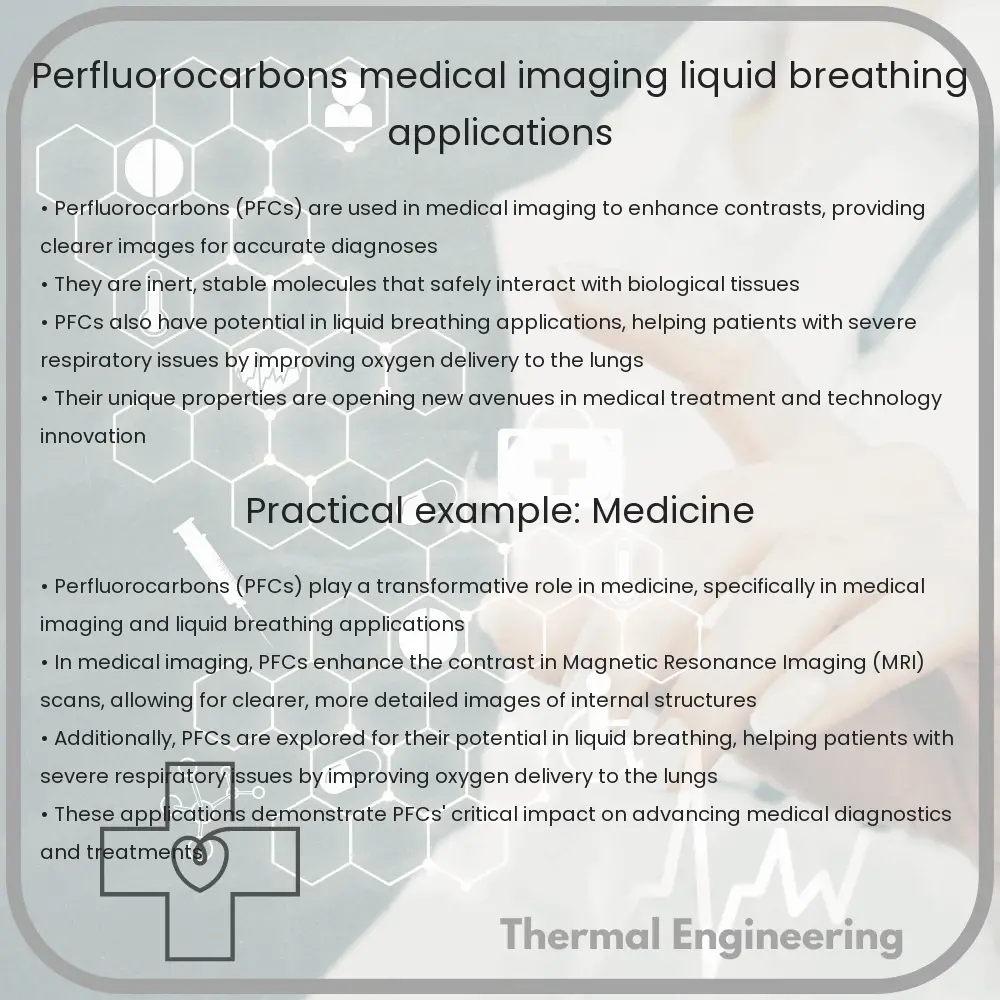Perfluorocarbons (PFCs) are fluorinated carbon-based compounds with unique properties used in medical imaging and respiratory care.

Introduction to Perfluorocarbons
Perfluorocarbons (PFCs) are a group of carbon-based compounds that have been extensively fluorinated. Unlike hydrocarbons, all the hydrogen atoms in PFCs have been replaced by fluorine atoms. This chemical modification significantly alters their properties, lending them unique characteristics such as high solubility for gases, chemical and thermal stability, as well as low surface tension. These traits make PFCs particularly useful in various engineering and medical applications.
Perfluorocarbons in Medical Imaging
In the realm of medical imaging, perfluorocarbons are primarily used due to their ability to dissolve large amounts of oxygen and other gases. This property is harnessed in contrast agents for ultrasound imaging. Contrast agents are substances that are introduced into the body to provide a clearer image of internal structures and help in the accurate diagnosis of various conditions.
- Ultrasound Imaging: When used in ultrasound imaging, perfluorocarbon-based emulsions can provide enhanced contrast compared to traditional imaging techniques. This is because the microbubbles formed by PFC emulsions are highly effective at reflecting ultrasound waves, which improves the quality of the image.
Perfluorocarbons in Liquid Breathing
Liquid breathing is a form of respiration in which a normally air-breathing organism breathes an oxygen-rich liquid (such as a perfluorocarbon), rather than breathing air. This futuristic concept, often seen in science fiction, has practical medical applications and implications, particularly in the treatment of severe lung diseases.
- Pulmonary Medicine: In medical treatment, perfluorocarbons can potentially be used to help patients with severe pulmonary conditions, such as acute respiratory distress syndrome (ARDS). PFCs can carry large volumes of oxygen and carbon dioxide. When used in a liquid ventilation system, they can improve oxygen supply and facilitate carbon dioxide removal at the alveolar level, thus supporting better gas exchange.
- Neonatal Care: Liquid ventilation using perfluorocarbons has been explored as a treatment for premature infants suffering from respiratory distress syndrome (RDS). The high density and low surface tension of PFCs can help maintain alveolar stability and prevent collapse, thereby reducing the risk of lung injury in these sensitive populations.
Conclusion
Perfluorocarbons exhibit a fascinating array of properties that have been effectively harnessed in fields as diverse as medical imaging and respiratory care. In ultrasound diagnostics, these compounds improve image clarity and precision by enhancing contrast. In the treatment of respiratory distress, perfluorocarbons facilitate better gas exchange and reduce the mechanical stress on delicate lung tissues through liquid ventilation. The ongoing research and development in the utilization of perfluorocarbons continue to broaden our understanding and capabilities in both medical science and engineering.